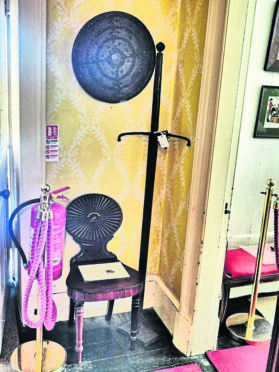Police have made a new appeal over an audacious theft of a historic 7ft sword from a remote Scottish island.
One theory police are working on is that the weapon may still be on the isle of Canna, which is home to just 18 people.
But six months on from the strange theft, officers admit they are still baffled by the crime.
Police Scotland is appealing for information following the theft of the claymore from a museum on the Inner Hebridean isle.
The sword was removed from Canna House. It is believed to have been taken sometime between June 6 and June 9.
Officers have travelled at least twice to the island in their investigation, which was said today to still be “ongoing.”
The 7ft sword – which dates back to the 17th century – is described as a two handled broadsword with a double edged blade, a wooden grip and a stamped fleur de lys.
“Enquiries have been ongoing in relation to the theft if a broadsword from a museum on the Isle of Canna in June this year,” said a spokesman for Police Scotland.
“The sword has not been recovered and in the investigation remains ongoing.
“Anyone with information who has not yet spoken to police can call 101, quoting reference NP2758/18.”
There is no indication that entry was forced to the museum.
The thief would have known that there would not be many witnesses, as Canna has a tiny population.
Canna House was given to the National Trust for Scotland in 1981 by the Gaelic scholar John Lorne Campbell. It has a warden who does not live on the site.
At the time of the theft there was access to the house as part of an event. There was no charge for entry and staff and volunteers supervised the visitors throughout.
